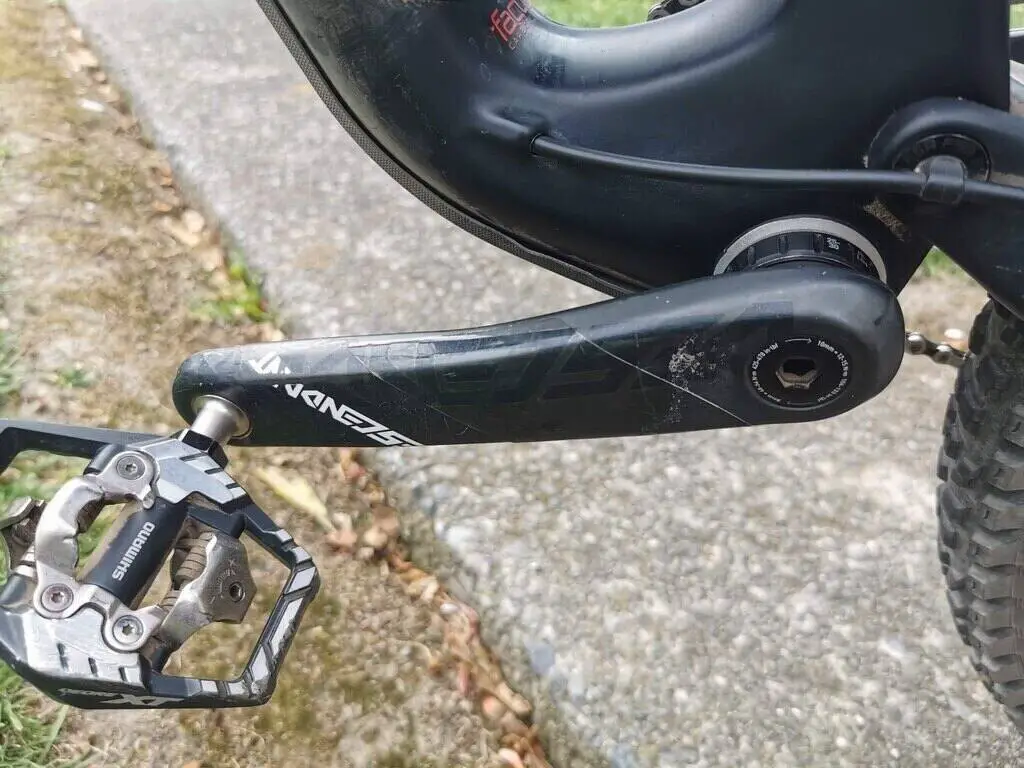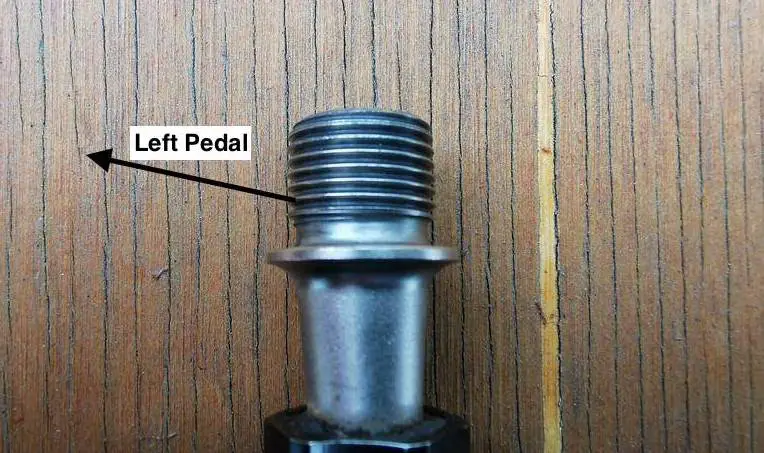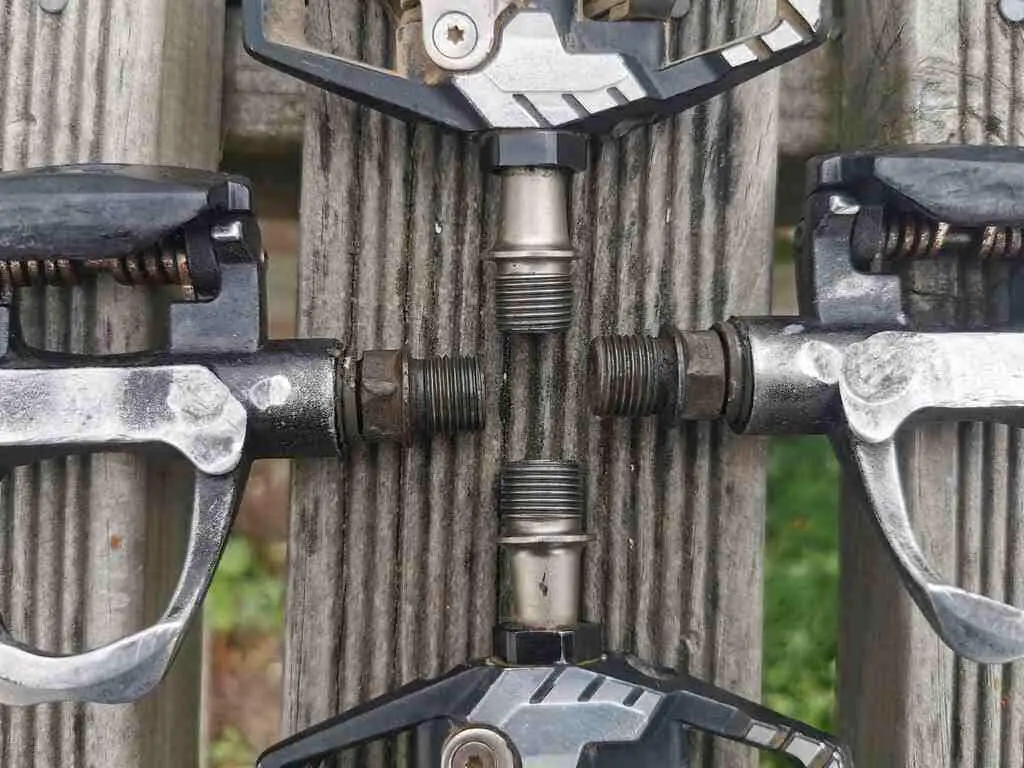Are you looking to buy new pedals, and need to know what bike pedal thread sizes apply to you? Then look no further- we have made a very simple guide for determining what size pedal thread you may have.
Bike pedal threads are a tricky thing to get your head around at first, there are a number of different types, and the left and right pedals have different thread directions as well. The right pedal has a normal thread (clockwise or “righty tighty”), whereas the left has a reverse thread (anti-clockwise or “lefty-loosey”).
This makes it all too easy to damage the thread on either the pedal or the crank, which can be a very costly mistake. This article aims to simplify bike pedals thread sizes, so you don’t make the error of damaging the thread!
Types of Bike Pedal Thread Sizes
It would be far too easy if all pedals were the same size and required the same tools to replace. However this is not the case. Fortunately for us, there are only two common types that are still produced today (unless you happen to have a French bike…in which case, see the third type).
9/16” x 20 tpi (14.28 x 1.27 mm)
The 9/16” is the most common pedal thread size on the market today and is the size most manufacturers use for their pedals. Almost all modern adult bikes have the 9/16” pedal with 20 threads per inch (tpi).
This thread size is what you will find on all the big brand mountain bikes and road bikes such as, Trek, Specialized, Giant, and any other big brand out there.
½” x 20 tpi (12.7 x 1.27 mm)
This pedal size is much less common than the 9/16” pedals, but bikes are still produced with these sized pedals today.
Typically bikes with these sized pedals are kids’ bikes, BMX bikes, and cheaper adult cruiser-style bikes. If you have one of these kinds of bikes, then it is likely that you have a ½” pedal thread size.
0.55” x 20.32 tpi (14 x 1.25 mm)
This sized pedal is hardly ever seen these days and manufacturers haven’t used this pedal for quite some time.
The size actually originates from the old-style French bikes as the French back then chose to have their own pedal size.
Thankfully when bikes started to get imported and exported, they stopped making bike pedals with this size and switched to the two that are used today.
If you have a retro French bike, then it is more than likely that this will be the pedal thread size that you have.
One key way to tell is usually the pedals are labeled with a G and a D which sensibly stands for gauche and droite, which means left and right in French.
How to Measure Bike Thread Pedal Size
Fear not, there are a number of ways that you can tell what size pedals you have or require. It requires very little knowledge and will only take a few seconds.
First things first pedal thread measurements have two numbers to define them. The first is the diameter of the pedal thread and the second denotes the number of threads per inch. So for a 9/16″ x 20 tpi actually means the diameter of the thread is 9/16″ and there are 20 threads per inch of pedal thread.
Check the Cranks on the Bike
Manufacturers have made it nice and easy for this one. All you have to do is check the cranks on the bike.
If your cranks are made up of three separate sections, two separate crank arms and the spindle that goes through the frame, then your pedals will be size 9/16” x 20 tpi. Your crank will look something like what is pictured below.

Three Piece Bike Crank
If however, your bike is made of only one piece of metal that is all connected and goes through the bike as one piece, then your pedal size will be ½” x 20 tpi.
This is a great little trick and is the easiest way to tell which pedal size you have, and is a great little trick.
Measure the Current Pedals Thread Size
If you still aren’t sure what pedal size you have, you can also measure the thread width. Since the sizes are very similar it is best to use a set of calipers if you have them. This will make sure you measure it accurately.
It is possible to measure them with a standard ruler, but definitely not as easy to tell.
Take it to your Local Bike Shop
If you have tried the above methods and are still not sure that you know exactly what pedal size you have, you can always take your bike or pedal to your local bike shop.
They will be happy to help you out and find a new set of pedals if you need them.
Bike Pedal Thread Adaptors
If you have bought pedals that don’t fit your bike or there are a set of pedals that you want but don’t come in the size that you need, then there are handy adapters that you can use to solve this.
Types of Pedal Thread Adapters
The adaptors are available for both converting from a ½” to 9/16” pedal thread and vice versa.
This adapter converts cranks with a thread size of 9/16" to a thread size of 1/2". It is made to fit pedals with a thread size of 1/2".
How to Install Pedal Thread Adapters
Installing the pedal thread adapters is super easy and only takes a couple of minutes.
First make sure you get the left and the right adapter correct and then simply install the pedal adapter as you would for a normal pedal. Apply a firm amount of pressure to tighten the adapter in place.
Next install your pedal into the thread that is cut out in the adapter. Again apply a firm amount of pressure to tighten and you’re good to go.
It is worth noting that your pedal will sit slightly further out from the crank than normal. This is just because this is where the thread for the pedal needs top sit.
How Bike Pedal Threads Work
Interestingly, the way in which bike pedal threads work today was actually developed by the Wright brothers. Yes, they built bikes before they created the airplane!
It was their invention which is why the left bike pedal has a reverse thread and the right side has a normal thread. The Wright brothers developed this kind of thread as it means with the motion of pedaling the pedals will actually move in the direction of tightening rather than loosening.
This is great as it stops the pedal from coming loose over time while your pedaling which would definitely not be fun. If your pedals do come loose then check out our guide on how to fix a stripped bike pedal.
How to tell Bike Pedal Thread Direction
Thankfully on most pedals, this is super easy as they have an L and an R written on them. The left-hand pedal goes on the non-drivetrain side of the bike and the right-hand pedal goes on the drivetrain side.
Now, if your pedals don’t have an L and an R you are not completely out of luck. You can tell which is which just by looking at the threads on the pedal.
When you hold the pedal up and look at the thread, the left pedal thread will slope upwards and to the left, whereas the right pedal thread will slope upwards and to the right. Check out the images below which demonstrates this.

Left Bike Pedal Thread Direction

Right Bike Pedal Thread Direction
Conclusion
Well, there you have it, that’s all about bike pedal threads and the different sizes. Now you won’t need to strip a thread on a pedal or crank again!
If you have a spare set of pedals with the wrong size thread for the crank, then I think that the pedal adapters are a great option to avoid buying new pedals.
Always be careful when threading pedals and never force them in. It’s always best to check you are doing it right before making the dreaded mistake of stripping the threads. Check out how to install bike pedals correctly here.

